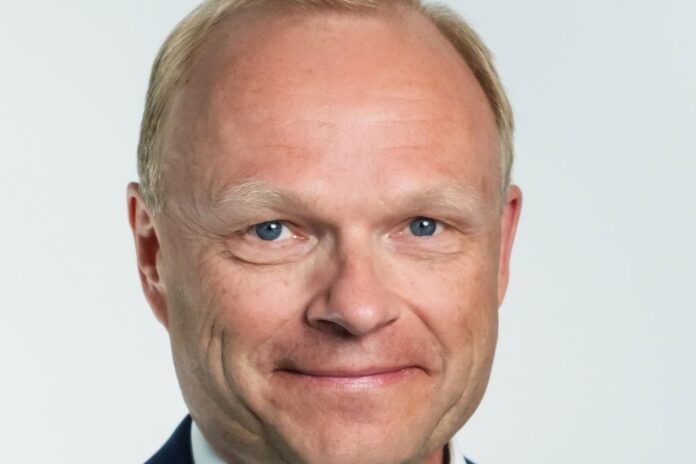Despite a 19% drop in sales, Pekka Lundmark remains confident of a stronger second half and achieving the company’s full year outlook
Nokia CEO and president Pekka Lundmark reflected on what the company called a “challenging environment” after weaker sales in North America and India led to the vendor posting revenues of €4.67bn, down by almost one-fifth from a year ago.
However, big cost cuts – including October’s announcement it would cut up to 14,000 jobs out of 86,000 employees – meant the vendor ending up with a 52% rise in Q1 net profit (€438m). Gross margin improved significantly year-on-year, to 48.6%, due to a combination of an improved gross margin in Mobile Networks, and the three smartphone licensing deals signed in Nokia Technologies. The vendor ended the quarter with a net cash balance of €5.1 billion.
Like Ericsson earlier in the week, Lundmark has seen some second-half green-shoots stating: “continued improvement in order intake, meaning we remain confident in a stronger second half and achieving our full year outlook.”
Breaking this down, Nokia saw improved order intake trends in its Network Infrastructure business in Q1 – the book-to-bill ratios was above one. Lundmark said the outlook for Fixed Networks has improved over the past three months, adding it was usually the first market to recover. However Optical Networks was still looking weaker. As a result, he sees Network Infrastructure returning to growth in the full year.
In Mobile Networks, the end of the 5G growth spurt in India combined with ongoing low levels of activity in North America led to a 37% net sales decline in the quarter. Nokia said that while all regions remained weak it continued to see growth in Middle East and Africa.
Fixed line’s relative health
Lundmark said Nokia has more than 40% market share globally excluding China in OLT products. “With our product portfolio and the ability to offer customers a roadmap to deploy X GPON, XGS-PON, and 25G PON in the same line card, we have a compelling value proposition,” he said. “Customers can also upgrade to 50G and 100G in the same chassis down the line with our Lightspan MF-14 platform.”
He added: “It’s important to remember that globally excluding China over 70% of homes are still not connected by fibre and there is a significant opportunity remaining in our biggest markets of both North America and Europe… In Europe, we see deployments remaining at a high level in markets with low penetration and we are seeing some mature markets starting to upgrade to XGS-PON and 25G PON.”
Automation and reducing telco opex
The chief executive said Nokia now has the capability to drive zero-touch autonomous operations across all network domains, including managing autonomous operations across multi-vendor networks.
“We have customers who are purchasing our autonomous operations specifically to accelerate their API exposure strategy,” he said “Our holistic solution is what also enables network programmability and the ability for CSPs to expose their APIs to developers using our network as code platform. This is a key point and we already have 11 operator agreements for our platform.”
He added: “To fully benefit from the emerging network APIs, CSPs need their operations to be fully automated because the API paradigm assumes an application interacts directly with the network in real time.”
Dell partnership is strategic
Lundmark highlighted Nokia’s strategic partnership with Dell, announced at MWC, as something that will benefit the vendor’s mobile, cloud and network offerings. “On the Nokia side, we will now adopt Dell as our preferred infrastructure partner for existing Nokia AirFrame customers, which will enable us to refocus our R&D efforts into areas where we can really differentiate as Nokia,” he said.
“Secondly, our private wireless solution, NDAC, or Nokia Digital Automation Cloud, will become Dell’s preferred private wireless platform for enterprise customers,” he said. “And we can see this becoming a very powerful channel to further drive growth in private wireless.”
Displacing Huawei and replacing chips in China
The CEO told analysts that the move by operators to strip out Huawei equipment was a gradual process. “But in typical Chinese vendors account 20% to 30% in markets outside of China, outside of the US of course, we estimate that last year in Mobile Networks and network infrastructure, the Chinese vendors have roughly or had roughly €12 billion in sales outside of China,” he said.
“And about half which is €6 billion of that in Europe, and this is obviously an ongoing discussion in several European countries that how they should deal with that question. But gradually the importance of this opportunity for us is continuing to grow,” he added.
When asked about the recent Chinese Government stripping out foreign chips from the nation’s telecom equipment, Lundmark said Nokia had not seen any impact. “We still need more clarity around that statement, because there are so-called foreign chips in pretty much all parts of all networks,” he said. “So, it’s very hard to see what that would mean in practice. So, we need more clarity about that. But important for us is to of course remember that our market share in China is fairly low and China accounts only – Mainland, China accounts for a low single-digit percentage of our sales.”



